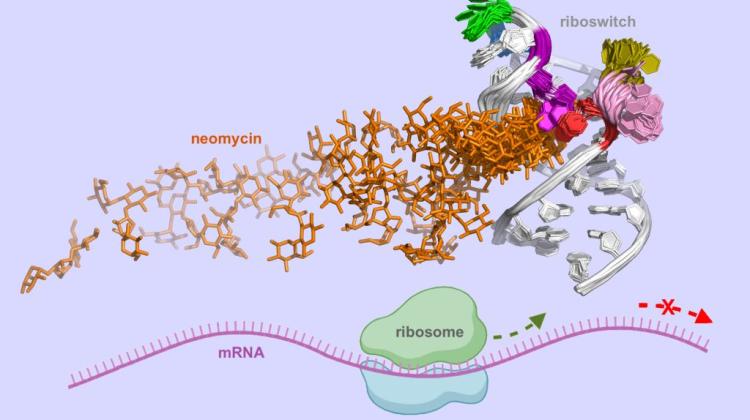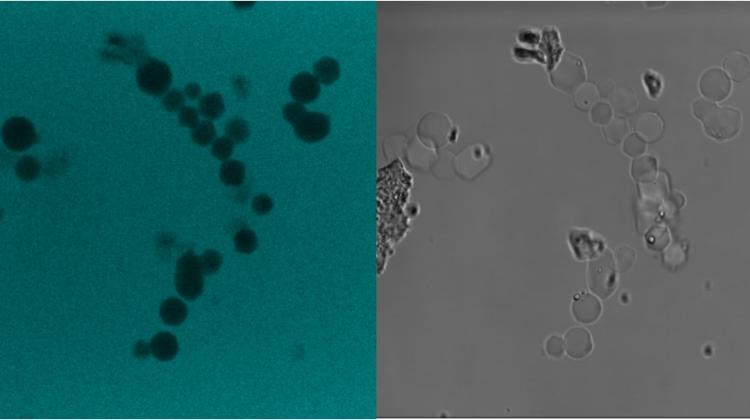Electrify beetroots and apples

Freezing, drying, pasteurising? Researchers are still looking for new, better ways to keep food from spoiling. One of them is using electric field and ultrasound. A field with appropriate parameters can kill bacteria, change the taste of product such as juice, extract nutrients from vegetables.
The most common ways to prevent food from spoiling include freezing, drying and pasteurising. As a result of these processes, food retains its usefulness for a longer period, but loses some nutritional value or texture. In addition, these processes are very energy-intensive, which involves both high costs and a relatively high environmental burden.
Researchers around the world are working on new, better ways of processing food. A team of scientists from the Department of Food Engineering and Process Management of the Warsaw University of Life Sciences, working under the supervision of Prof. Dorota Witrowa-Rajchert investigates the possibility of using pulsed electric field (PEF) and ultrasound for this purpose. Particularly promising are the results of Dr. Artur Wiktor\'s study on the impact of PEF on bioactive properties of food and the process of drying fruits and vegetables.
"The use of a pulsed electric field involves stimulating the cells with very short electric pulses with a high amplitude voltage. If a single cell is exposed to these pulses, holes form in the cell membrane" - announced WULS-SGGW in a release. "Depending on the specific parameters of the electrical field, we can achieve different goals: non-thermal food preservation or the acquisition of specific nutrients from the cell" - reads the WULS-SGGW release.
The high temperatures that are commonly used in food preservation are responsible for the loss of vitamins and bioactive ingredients. That\'s why the PEF method - which does not use preheating - is a very good way to preserve juices or smoothies. The electric field - with appropriately selected parameters - is capable of killing yeast or bacteria cells. For this reason - according to WULS-SGGW - processed food will have a longer shelf life and be more valuable.
"Another way to use PEF is to pre-treat fruit and vegetables before drying, freezing and pressing. This allows to improve some process technology, for example shorten the drying time by more than 20 percent. It is simply easier to remove water from the cell if there are holes in the cell membrane. It is also possible to reduce the temperature of the drying air, which greatly influences the energy consumption of the process and the quality of the product. PEF also reduces the freezing time. It allows to more economically obtain a better quality product" - argues Dr. Wiktor, quoted in the WULS-SGGW release
Properly selected electrical field parameters can also alter the different properties of the product such as taste, clarity or polyphenol (natural antioxidant) content. This allows to make fruit juice or smoothie appear sweeter, even though the sugar content remains unchanged or even is lower. Simply put, the sugar contained in the fruit cells will be extracted outwards, making it more noticeable.
Pulsed electric field can also be useful, for example, for extracting nutrients from fruits and vegetables. Bioactive ingredients can be extracted through holes in the cell membranes and used to make food supplements. PEF can also be used to extract dyes from plant products. Efficiency of this pre-processing method is much higher than the traditional method.
Although the PEF method has been known since the middle of the twentieth century, when research on a broader scale started, it is not widely used. There are several reasons.
"An important barrier to implementing PEF in the food industry on an industrial scale is the cost of purchasing this technology. The machines are relatively expensive, which affects the profitability of production. The products made using PEF are already available. But I think it will take several years before this method becomes common in the Polish food industry" - noted Dr. Wiktor.
Another concern is the fear of using electricity in food processing. "Although pulsed electric field had been used in medicine for decades, for example in the treatment of cancer, its use in the food industry can give rise to unwarranted resistance. So far there is no indication that this technology could be harmful. According to current state of knowledge, the method is safe, very promising and consistent with the idea of sustainable development" - said Dr. Wiktor.
Research conducted by Dr. Artur Wiktor was financed by the Leader programme of the National Centre for Research and Development.
PAP - Science and Scholarship in Poland
ekr/ agt/ kap/
tr. RL
Przed dodaniem komentarza prosimy o zapoznanie z Regulaminem forum serwisu Nauka w Polsce.

















